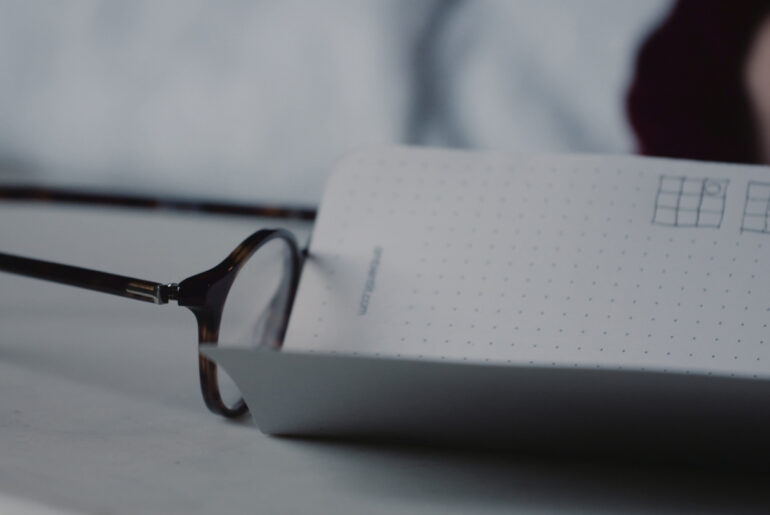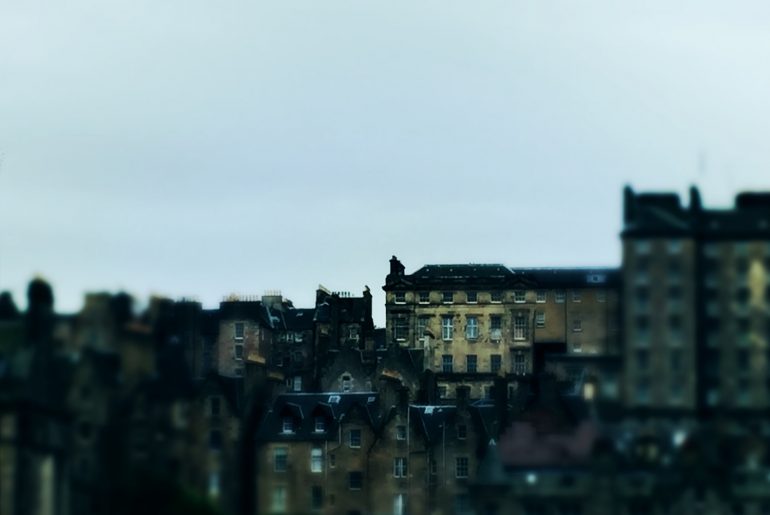It’s been a while. And we’ve been busy. More on that later but for now, an announcement. Save the Date: 23-24 May 2024 How can authors find new ways of telling stories and reaching audiences? How can publishers move past dominant digital platforms, and reading experiences that are replicas of print? How can creative practitioners bring together the best of books, games and immersive experiences? We think it’s time to talk about the whole field of creative technology and publishing, and to do so provocatively, persuasively and with genuine passion. On 23-24 May, we’re putting together an event at Arnolfini in Bristol. Day 1 will be a showcase, with examples of Ambient Literature for you to experience, panel discussions and speakers from across the creative industries. Day 2 is an optional, hands-on workshop for authors, artists, game designers and other creatives looking to embed Ambient Literature in their own practice.…
Approaching the End
As we approach the final months of the Ambient Literature project, the whole team find ourselves facing in at least two directions. We’re convening on a series of final events (more on which below), but are also spending our time drawing out conclusions and reflections regarding the last two years of work. When we began in May 2016, we were upfront about the challenges of the work we were going to make and address. Here’s what I said at the launch event at Hachette’s (then shiny new) headquarters in Blackfriars: Here’s an admission at the start of a research programme: We don’t know what Ambient Literature is. We’ve started to map the territory, to define by identifying borders and by testing the edges. It’s important to note though, that we don’t want to reduce the idea to something tight and defined, rather our intention is to open it up, so…
Responding to Your Presence
Consider several apparently unrelated points of reference: On November 19th 1942, in the small Polish town of Drohobych, a man (amongst 230 others that Black Thursday) was shot on the street by an SS officer called Karl Günther. 1 Bruno Schulz was a writer, and left behind two volumes of extraordinary short stories, volumes of letters, drawings and paintings, and a novel that no-one on earth has ever read. Schulz was an adept of a technique of writing coined mytho-poesis, a poetic interpretation of life and its events through symbol, metaphor and allegory. His short fiction (collected as The Street of Crocodiles and Sanatorium Under the Sign of the Hourglass) are replete with symbolic figures, recurring characters and successive scenarios that taken together, build a world in which Schulz’ readers take a kind of refuge. His admirers include Cynthia Ozick, Jonathan Safran Foer, The Brothers Quay, and me. Writing is, I think, a…
I See a Darkness
And many times we’ve shared our thoughts But did you ever, ever notice The kind of thoughts I got (1) Ambient Literature launched the second of our commissions this week in London. The Cartographer’s Confession, written by James Attlee, is a very different piece of Ambient Literature when considered alongside It Must Have Been Dark By Then, which for a research project interested in consolidating forms for writing, and exploring what might be possible in this space we’re defining, is a positive thing. If I was to make a very broad comparison, then Duncan Speakman’s work addresses the Ambient in our title, while The Cartographer’s Confession has ambitions toward the Literary (2). James was kind enough to agree to an “in-conversation” discussion with the journalist Thomas McMullan during the launch event. We’ll post the audio of that discussion soon, but the richness of that dialogue made me think about the kind…
Porous Does Not Mean Leaky
As we approach (more or less) the half way point in our research project, something other than the passage of time and available funding has been on our minds. Something more fundamental to the project itself. Duncan Speakman’s It Must Have Been Dark by Now launched last week (and, all things being equal, will be coming to a library near you sometime in the next six months — details to follow) and we held our mid-point Symposium. What was on our mind was stating, or trying to state, what it was we meant by Ambient Literature. We’ve been necessarily vague about this in the last year, partly because of the nature of a project that knows it draws on an existing canon of work (which means we’ve been careful about the borders of our study) and the uncertainty about what we mean by this. Is it a genre? A narrow…
A Communicable Pathogen
August. 2016. Sitting opposite me on the train to London, an old woman pulls out a copy of Silvina Ocampo’s Thus Were Their Faces and begins to read. I wait for a while, a palpable itching in my palms. Then I speak. I reach out to her, indicate that I’m also an adherent of that obscure faith. That we share something. I ask her about Borges, and Bioy Casares. About Tlön, and fiction, and creation. About feminism before it had a name. About Angela Carter and Leonora Carrington, about Kirsty Logan. If it were a year later, we’d talk about Camilla Grudova too. Books are a secret society with a handshake and a badge. They extend out of the immediate experience, and slip into our view of the world. We share books with friends, we recommend and extoll writers who move us, who make us think. The first thing I…
The Presence of What Ought to be Absent
Among the various challenges for the Ambient Literature project is how to address the way in which stories work: how stories work when the reader is necessarily present within the piece as it is delivered by means of a pervasive computing device. Experiencing story never is, and has never been, a passive act. We subsume ourselves within stories, and assign importance to character, action, and consequence based on a set of carefully crafted manipulations of our reading. Words on paper matter, as do design, typography (as Ian Gadd reminded us last week), and even the paper on which those words are printed. Stepping back from material details leads us to genre: the tropes of storytelling, often hidden in the background and unnoticed; the assumptions we make about a story from the incidental details — setting, voice, character, and plot elements; things that can be manipulated by good storytellers in order…
Shifting into a Minor Key
A week ago, the Ambient Literature team, working with Circumstance, premiered the second in our series of small experiments in form for Ambient works. The files and content will be up on the website in the next few weeks, but for now, I wanted to share an initial thought on something the piece brought to light. Attention Conventional fiction — the short story for example — is built on a word count. Writing defines a short story by length. Wikipedia (helpfully or not) suggests that a short story is “a piece of prose fiction that can be read in one sitting.” Generally, short fiction is something between 3 and 9 thousand words. A single sitting is, maybe, ten to twenty minutes. Perhaps a little longer. When I was writing yesterday you’re still dreaming I had a time limit in my mind — twenty minutes — as a guide to how…
Drawing What’s Not There
One of the methods we use to teach first year students to think about drawing differently (context: I teach drawing and printmaking when I’m not making and researching new forms of literature) is to use negative space in order to draw. To look at what’s not there as much as they do at the object they’re drawing. What this teaches them (hopefully) is that the space around a form is as important as the form itself. The unspace, so to speak, between the architecture of a building and its surroundings illuminates aspects of the relationship between each piece of steel, concrete, and glass and the people moving through that space. That’s been on my mind this week as we prepare the final elements of our second experiment in Ambient Literature. Yesterday you’re still dreaming is a short, focused piece of research-by-practice; an intervention into the overall programme of work in order to…
What is a book and what does it have to do with Ambient Literature?
Below is Tom Abba’s response to the first ambient literature research team meeting. Read more about it from Jon Dovey and Amy Spencer. * * * I had a beer with Duncan Speakman last night. Duncan’s starting to put the shape of his commission for Ambient Literature together and amongst the vagaries of location responsive storytelling, he asked me a question: I still don’t understand what the book has to do with Ambient Literature? And I paused. I thought (as an academic involved in a two year research programme is supposed to do) and then I talked about Ian Gadd’s presentation earlier that afternoon. What is a book? On the one hand, that’s an easy question to answer. A book is a collection of pages (sometimes collected in sections) stitched or glued together and bound with board (or card) to provide a cover. It’s a codex, a container for ideas.…








